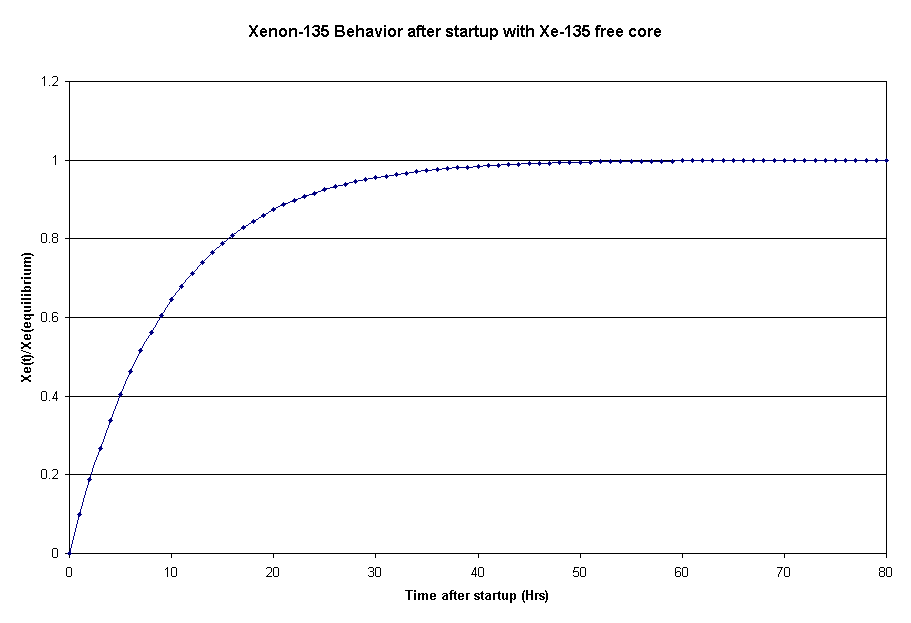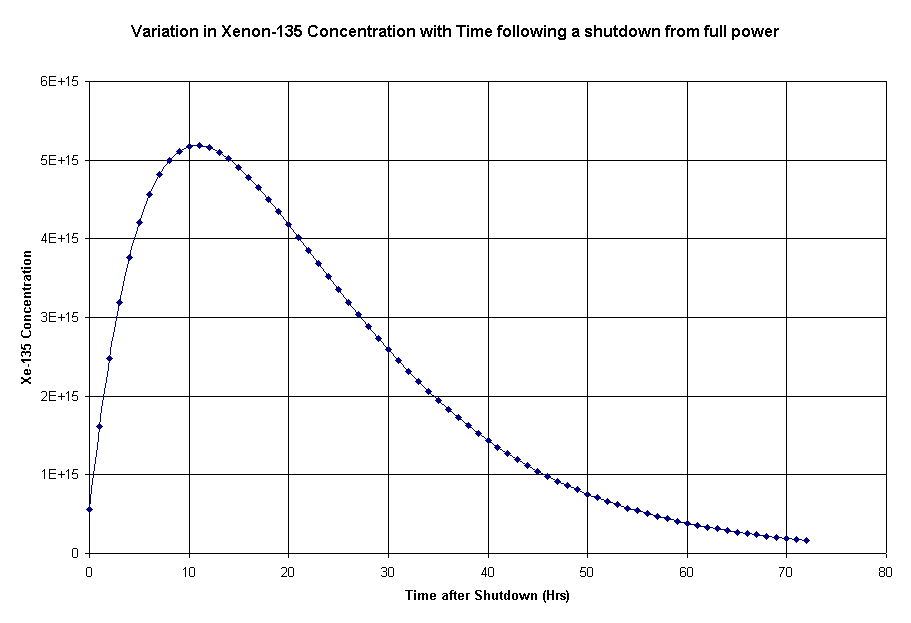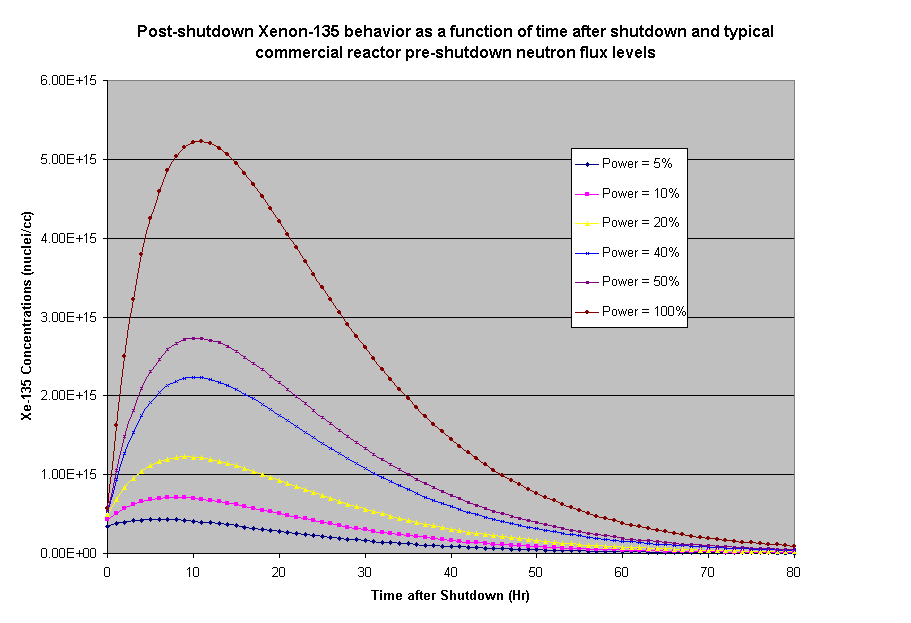
Xenon - An Introduction to Neutron Poisons
During the early operation of the Stagg Field and Hanford reactors, the scientists found that some nuclides were produced that caused the reactor to shutdown. These nuclides came to be known as - neutron poisons - because they stopped the neutrons from being absorbed in the fuel and causing fission. Xenon-135 was one of the first poisons identified. For a reactor just starting up, the behavior of xenon-135 is shown below.

Xenon-135 (Xe135)
Xenon-135 is one of the many products produced from the fissioning of uranium, thorium, or plutonium nuclides. Xe135 is produced directly from fission and from the BETA decay of Tellurium-135, as shown below. The Xe135 subsequently beta decays to Cesium-135 then to Barium-135. The half-lives are shown in RED below the line.
<0.5 min 6.7 hr 9.2 hr 2 x 106 yr
Following a shutdown the xenon concentration increases as shown in the figure below:

Note that the xenon peaks then falls off to almost xenon-free after 72 hours.
Further investigation shows that the size of the increase and the time to peak depends on the power level the reactor has been operating at, as shown below:

If the reactor is to be started up when the xenon is at the peak, there must be sufficient fuel and control rod worth to overcome the effects of the xenon.
Other neutron poisons buildup in the reactor and their effects must be similarly considered in the design and operation. These include:
Other neutron poisons are purposely used in the design and operation of reactors. These include:
Copyright © 1996-2006. The Virtual Nuclear Tourist. All rights reserved. Revised: December 21, 2005.